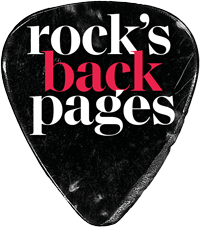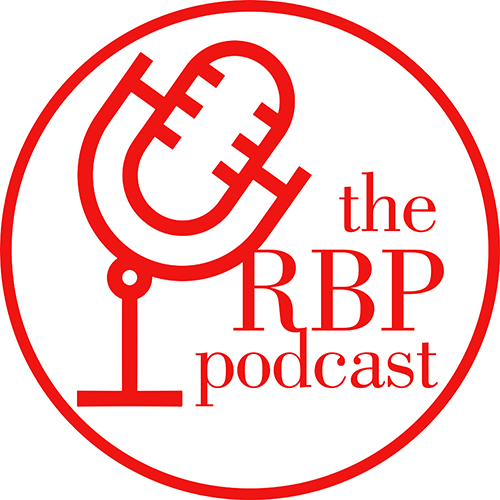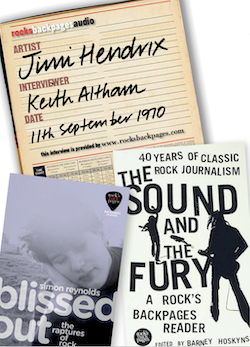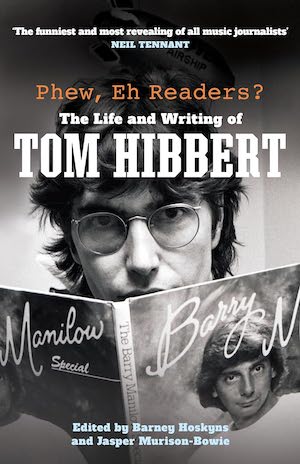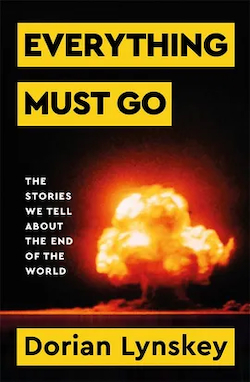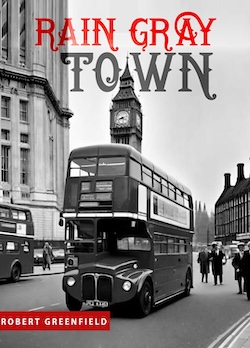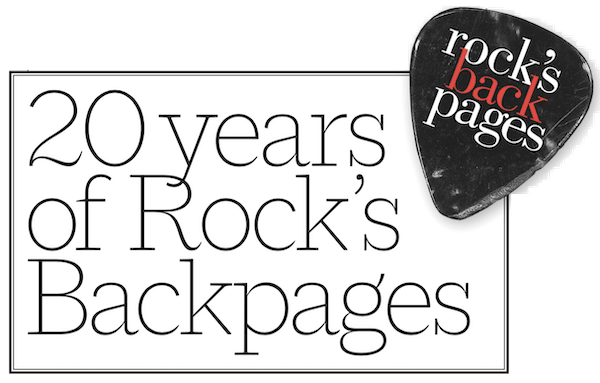Pink Floyd
OCTOBER 2020 marks the 50th anniversary of Pink Floyd's fifth studio album Atom Heart Mother. To celebrate, we've put together another special collaboration with Rockarchive, delving back through our archives to share a selection of historic images and features that tell the story of this remarkable record.
Storm Thorgerson (2010)
ATOM HEART MOTHER was the fifth studio album by Pink Floyd. To many it marks the point at which Pink Floyd emerged from their post-Syd malaise and found their way forward, towards everything we remember them best for.
The album was released by Harvest on 2nd October 1970, having been recorded at Abbey Road Studios. It was the band's first album to reach No. 1 in the UK. Ron Geesin, who'd already influenced (and collaborated with) Roger Waters, contributed to the title track and received a then-rare outside songwriting credit.
"The opening section is clearly a critical statement about the nature of so-called 'progressive rock'," Geesin told The Word's Jim Irvin in August 2008."I've got very mixed feelings about rock music. I find my part embodies a dilemma for and against. The group's drone is on the tonic note of E, my brass drones pull and twist that in tension, up and down, never settling on it... It could have been called Argument in E Minor for Band and Orchestra."
During the scorching summer of 1970, Geesin, who'd met the band through Nick Mason, laboured in his top-floor studio in Ladbroke Grove on 'Epic' and the score to The Body (with songs by Waters), clad only in underpants. His arrangement was composed to a spare backing track laid down by Mason and Waters, with melodic suggestions by Wright and Gilmour. While recording it at Abbey Road in June, Geesin quarrelled with the brass players of the EMI Pops Orchestra, who had trouble getting it right, and stood down as conductor in favour of choirmaster John Aldiss.
On July 18th, 1970, Floyd and Geesin were at the BBC's Paris Cinema studios in Lower Regent Street preparing a session for John Peel's Radio 1 Sunday Concerts series. Roger Waters didn't consider either of the working titles sufficiently interesting, believing they needed a better one before the afternoon's recording. During a break, Geesin pointed to that day's Evening Standard. "Your title's in there," he announced. Waters flicked through the paper and his eyes lit on a small story about a woman, Constance Ladell, who'd just been fitted with a prototype pacemaker that contained traces of radioactive plutonium. The headline read: "Atom heart mother named".
When the album appeared in October 1970 with its famous cover image of a cow, the Atom Heart Mother Suite had six sections. "On the score the piece was divided into sections A to Q, but we assumed it was one track," Geesin told Irvin. But Floyd manager Steve O'Rourke pointed out that, under American publishing rules, each track – no matter how long – would be treated as one song. a fifth of the record rather than half of it. So they divided it into six sections purely for commercial reasons. Geesin suggested some titles, such as 'Father's Shout', sparked by his admiration for Earl "Fatha" Hines. The band came up with 'Breast Milky' and 'Funky Dung' after designer Storm Thorgeson delivered the bovine cover.
Storm Thorgerson with Dave Gilmour on Dark Side Of The Moon tour, 1974 (Jill Furmanovsky)
The cow, subsequently identified as Lullabelle III of Potters Bar, was a random idea of Thorgeson's after the group confessed they hadn't a clue what the work was about, but wanted something "non-psychedelic". Yet to the consumer, Atom Heart Mother seemed cohesive, albeit nicely enigmatic, summoning various aspects of the countryside, the rumble of thundering skies, the whiff of freshly chewed grass and the impending clamour and stench of the slaughterhouse for its cover star.
The album art was the first one to not feature the band's name on the cover or contain any photographs of the band anywhere. This was a trend that would continue on subsequent covers throughout the 1970s and beyond. Storm Thorgerson reworked the classic artwork for the 40th anniversary re-release of the album and recalled: "The main thrust or reason for the original cow was its seeming irrelevance – it had very little to do with the music, but lots to do with Pink Floyd – it was ironically and strangely appropriate, so that viewers were not put of but tended to ask 'Why a cow?'. Since wire frames are so important in contemporary CGI, it seemed only appropriate [to celebrate the 40th anniversary of Atom Heart Mother] to make the sculpture of our new cow out of wire. We took it back to the original location to shoot it. A sculpture of a cow made of wire, in the same position in the same field as the original, slowly disappearing."
Dave Gilmour at Hyde Park, London, 18th July 1970 (Tony Collins)
Although it was commercially successful on release, the band, particularly Waters and David Gilmour, have expressed several negative opinions of the album in more recent years. Nick Mason shared his thoughts on the creation of Atom Heart Mother in a 1972 interview with NME's Tony Stewart:
In 1970, with Atom Heart Mother, it was a very stagnant period for you, whereas previous to that you had developed very well.
Yes, well Atom Heart Mother was a specific exercise. I don't think it was a stagnant period, really, I think it was very well worth doing. It wasn't entirely successful, but I think some people were frightened we were going to stick with a choir and orchestra.
What was the exercise?
Just to work with it, and try...
Was there a different phase again?
Yes. It was just something that seemed like a good idea at the time.
That was the first album which had a complete side dedicated to one theme.
Yes.
Was it something you consciously attempted at the outset or did the idea just develop?
We didn't consciously set off to do it. but it became apparent that we'd need at least a side to get it all down. You have, to some extent, to work in album terms, which means that a piece can't be longer than forty minutes. Maximum unbroken length is about 23 minutes or whatever.
From the group's point of view do you think it was successful?
Well, we'd all like to do it again, we'd all like to re-record it. It wasn't entirely successful but it was extremely educational.
Pink Floyd backstage at the Dome, Brighton, June 1972 (Jill Furmanovsky)
You said that the album was something you did as an exercise but I thought 'Echoes' on the new album did a similar thing without the brass and choir.
Yes. I think there are similarities between Atom Heart Mother and Meddle. I don't think we could have done Meddle without doing Atom Heart Mother.
Atom Heart Mother, with the use of brass and choir, suggested you didn't want to do it all on your own. Then with Meddle you did everything on your own, though the constructions were similar.
You're obviously right about the construction. There are various things that have a Pink Floyd flavour, but are also very dangerous Pink Floyd clichés. One is the possible tendency to get stuck into a sort of slow four tempo. And the other thing is to take a melody line or the chorus or something and flog it to death.
Maybe we'll play it once slow and quiet, the next time a bit harder, third time really heavy, which tends to come a little bit into Meddle and in Atom Heart Mother. But it's slightly more forgivable with the choir and orchestra, 'cause it's nice building an orchestra and bringing in extra brass and playing more complex lines.
There are various sections on AHM that I'm very happy with. I love the choir section both the singing and the spoken choir section.
Do you think, in view of the similarities, that you're slow in producing new material?
The constructing of 'Echoes' is rather similar in terms of it running through various movements. But the movements are so different that I don't feel that we've had to milk Atom Heart Mother to produce 'Echoes'.
How much discussion by the band goes into the creation of the numbers?
Lots. We do more talk than anything else, really.
How does a piece like 'Atom Heart' or 'Echoes' come about?
Well 'Echoes' was a specific attempt to sort of do something by a slightly different method. What we did, in fact, was book a studio for January; and throughout January we went in and played. Anytime that anyone had any sort of rough idea of something we would put it down. At the end of January we listened back and we'd got 36 different bits and pieces that sometimes cross-related and sometimes didn't. 'Echoes' was made up from that.
Say Dave Gilmour writes a piece, how do the others become involved with it?
Well, it depends very much. We'd have to talk about each piece specifically; Dave maybe comes in with a song which he's recorded already at home. He's got guitar, possible drums and vocals on it. In the case of 'San Tropez', Roger came in and the song was absolutely complete. There was almost no arranging to do on it. It was just a matter of learning the chords.
On other songs the thing is pretty loose. We may have a bass line and a rough idea for the chorus and not for the middle eight.
*
Dave Gilmour at the Rainbow, London, 4th November 1973 (Jill Furmanovsky)
IT WAS AROUND the recording of Atom Heart Mother that David started to collect guitars but perhaps more importantly – during the band's visit to the States in May in 1970, he bought the now legendary Black Strat. David used the Black Strat for the first time onstage at the Bath Festival in June and since then it underwent numerous modifications.
Christie's Auction House in London described "The Black Strat" as follows: "David Gilmour's 1969 Black Fender Stratocaster has earned its place in rock'n'roll history. Known as ‘The Black Strat', the guitar was purchased in 1970 at Manny's on West 48th Street in New York, and has become the Pink Floyd singer and songwriter's most identified instrument over the course of nearly 50 years."
On June 20, 2019, the Black Strat sold in a charity auction for a price of US$3,975,000, becoming the most expensive guitar ever sold at that time. The guitar was purchased by guitar collector and Indianapolis Colts owner Jim Irsay.
Perhaps Atom Heart Mother 's greatest legacy is that it marjks the end of Pink Floyd's years as a fearlessly experimental band and the beginning of their career as rock superstars.
back to Rockarchive


